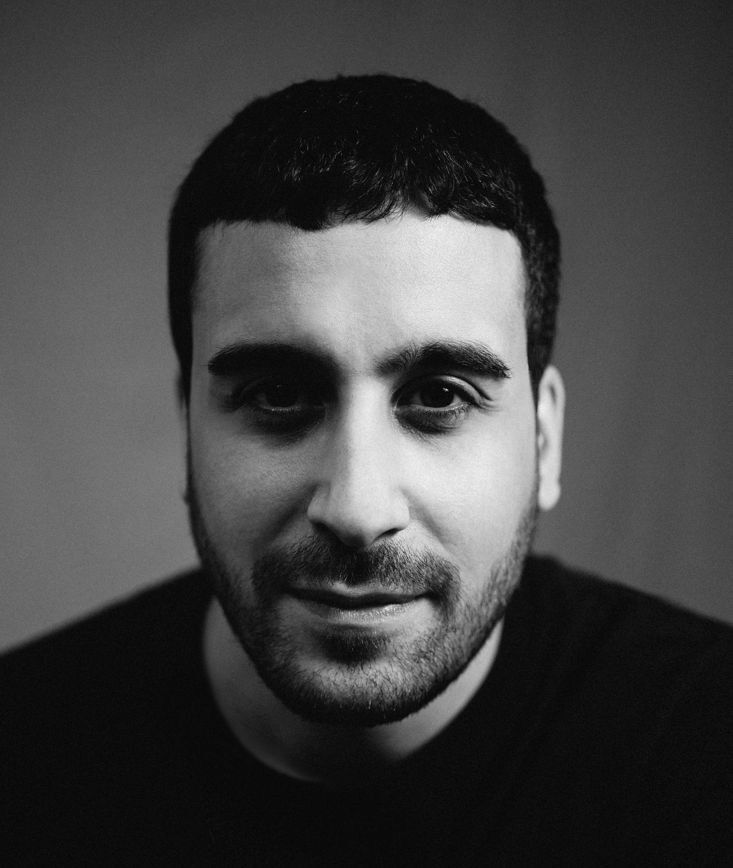Tarik Kiswanson
Visual Artist, Poet

- Visual Arts
- New York
“From Pennsylvania to Idaho, via North Carolina and Los Angeles, I will follow the paths taken by the cabinetmakers George Nakashima and Thomas Day, to places bearing the memory of fractures in American society.”
I was born in 1986 in a small city on the west coast of Sweden called Halmstad. My parents had exiled from Palestine to North Africa and later Jordan before arriving to Sweden in 1982. They were amongst the first immigrants to arrive to this city that would quickly become very multicultural. I grew up with my family in a social housing complex in the suburbs where immigrants from countries like Bosnia, Vietnam, Iraq, and many other wars struck countries lived side by side. Our neighborhood was a weave of people of different confession, language, and origin. Growing up in such a multicultural community would shape me profoundly, much more so than I thought at the time. At 17 I moved to London where I would spend ten years before finally relocating to Paris in 2010.
For over a decade, I have explored notions of rootlessness, metamorphosis, and memory through an interdisciplinary practice. Over the years my work has retained an attachment to the intimate and personal while simultaneously speaking to universal concerns relative to the human condition and to social and collective histories of rupture, loss, and regeneration.
Laureate of the 2023 Marcel Duchamp Prize, Tarik Kiswanson received his MFA from École Nationale Supérieure des Beaux-Arts de Paris (2014) and BFA from Central Saint Martins-University of the Arts London (2010). His interdisplinary practice addresses notions of rootlessness, regeneration, and renewal. His oeuvre can be understood as a cosmology of related conceptual families, each exploring variations on themes like refraction, multiplication, disintegration, levitation, and polyphony.
Kiswanson’s work has been the subject of numerous solo exhibitions at institutions, most recently at Bonniers Konsthall (2023), Salzburger Kunstverein (2023) and Museo Tamayo (2023). He has participated in group exhibitions and biennials at institutions such as Centre Pompidou, 16th Lyon Biennial of Contemporary Art, Performa 19 Biennial, and MUDAM.
My project extends my ongoing research into furniture made during periods of historical upheaval (wars, oppression, migration, exiles). My recent research focused for example on a series of furniture called mobilier de sinistrés, made in France after the Second World War designed by the architect René Gabriel. I am particularly interested in two American cabinetmakers, George Nakashima (1905 – 1990) and Thomas Day (1801 – 1861), whose stories are intrinsically linked to dark periods in American history, namely the internment of
Japanese Americans during World War II for the first and slavery and racial segregation for the second. The pieces of furniture created by these two cabinetmakers embody moments of great violence and collective trauma in American society. I would like to meet the descendants of each of them and immerse myself in the places in which they lived and worked. I am equally interested in the forms they created as their working conditions and personal history. This research will constitute the starting point for new works that I will produce at the end of the residency.
I would like to begin my residency on the East Coast, in New Hope, Pennsylvania. I will travel to the workshop where George Nakashima worked most of his life and where his foundation is still located. I would like to meet his team and in particular his daughter.
Thomas Day (1801 – 1861) came from an African-American family from Virginia and was one of the few free black cabinetmakers of his time, having won the recognition of his white contemporaries. I travel to Milton, North Carolina, where his atelier is still located today. I will meet his descendants and the people who work to preserve his legacy.
I will travel to Los Angeles to visit the Japanese American National Museum, which brings together numerous archives and artifacts relating to the life of Japanese-Americans. California was the territory that had the largest concentration of Japanese-American internment camps during World War II.
Son of Japanese immigrants born in the United States, George Nakashima (1905 – 1990) was interned between 1942 and 1943 in the Minidoka camp in Hunt, Idaho. It has today become a preserved historic site which I would like to visit. From Pennsylvania to Idaho, via North Carolina and Los Angeles, I will follow the paths taken by Nakashima and Day, in places bearing the memory of fractures in American society.
In partnership with

ADIAF
The Association for the International Diffusion of French Art brings together 300 collectors of modern art who are fully committed to the creativity quest. It was created in 1994 with the ambition to highlight the flourishing creativity of the French artistic scene and to promote the French art scene throughout the world. ADIAF has created in 2000 the Prix Marcel Duchamp which is awarded annually to one among four shortlisted artists either born or residing in France and working in the field of visual arts. Organized since its founding in partnership with the Centre Pompidou, this seminal art Prize is considered today one of the most relevant vectors of information on contemporary art in France.
